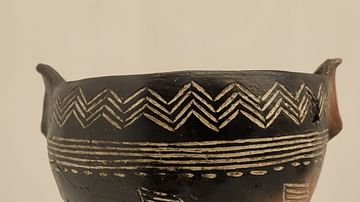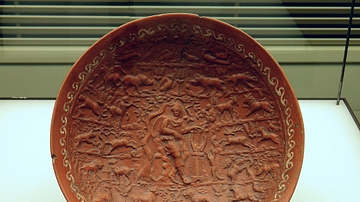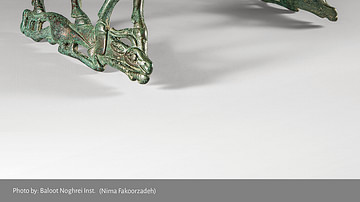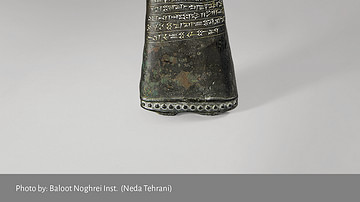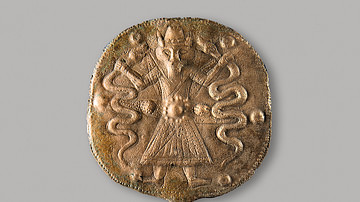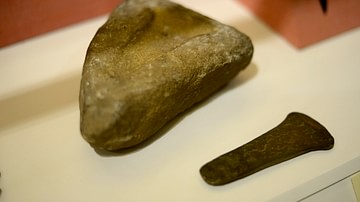Illustration
Bronze axe head topped with a man ruling animals, found in Saqqiz, Luristan, from Iron Age II (c. 1100-900 BCE).
National Museum of Iran, Tehran. cc. no. 1434, photo by Neda Tehrani (Baloot Noghrei).
Following the collapse of civilizations at the end of the second millennium BCE, Mesopotamia and the neighbouring western parts of modern Iran rose to an age of (re)development and flourishing of both old empires, such as Assyria and Elam, and new urban settlements of various migrant communities. The Medes and the Mannaeans, among others, established small cities and strongholds that soon turned into prolific and prosperous kernels of production and commerce. Metalwork in the region enjoyed a massive culmination, and although Scythians already mastered the manufacturing of iron objects, the Luristan bronze remained remarkable in terms of quality, variety, and popularity.
Saqqiz has historical roots in Izirtu, the Mannaean capital established in the 9th century BCE according to contemporary Assyrian texts. Later, it probably fell to the Medes, who allegedly withdrew from it to their future capital, Hegmatanah, following the invasion of Sargon II. The city was rebuilt by the Scythians, who seemingly renamed it after their ethnic designation, Eskit/Sakka. The axe head found in Saqqiz is a fine example of the Luristan bronze of its time. It is topped with a male human figure seated in a central, circular 'throne; not dissimilar to the Assyrian kingly chariots. His hair, tied back in a bun, can be seen elsewhere in the Scythian art, e.g. the Scythian twin warriors found in Kerch from the 5th century BCE. The lion and the bird placed, respectively, on the front and back of this figure have a background of symbolising power and sovereignty in Mesopotamian and Iranian art from the 4th millennia BCE onwards. Such iconography can relate this axe head to warfare. The combination of different styles in the sculpted ornaments of the axe, on the other hand, can reflect a network of cultural impacts and exchanges centred in Saqqiz in Iron Age Iran.
External Links
Cite This Work
APA Style
Iran, N. M. o. (2024, July 15). Bronze Axe Head Topped with a Man Ruling Animals from Western Iran. World History Encyclopedia. Retrieved from https://www.worldhistory.org/image/19224/bronze-axe-head-topped-with-a-man-ruling-animals-f/
Chicago Style
Iran, National Museum of. "Bronze Axe Head Topped with a Man Ruling Animals from Western Iran." World History Encyclopedia. Last modified July 15, 2024. https://www.worldhistory.org/image/19224/bronze-axe-head-topped-with-a-man-ruling-animals-f/.
MLA Style
Iran, National Museum of. "Bronze Axe Head Topped with a Man Ruling Animals from Western Iran." World History Encyclopedia. World History Encyclopedia, 15 Jul 2024, https://www.worldhistory.org/image/19224/bronze-axe-head-topped-with-a-man-ruling-animals-f/. Web. 22 Apr 2025.

